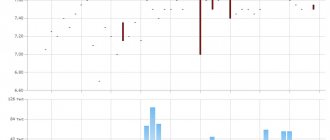As with many other areas of investing, European bonds can be an excellent resource for wealth creation. If the investor knows where and what to look for.
However, obtaining an acceptable return on bonds alone is now difficult to predict. The value of these securities has increased, and yields have decreased. Of course, it cannot be said that bonds no longer have value.
Even now, there are some segments of the bond market that still provide an adequate risk/reward ratio. First of all , these are individual sectors of emerging markets ( Russian financial or Turkish telecommunications companies ).
In order to effectively use this asset class, even if it has now become less attractive, I recommend paying attention not only to debt securities of the American market, but also to European bonds.
What are European bonds?
European bonds, like any other issueable debt securities, are a form of long-term debt that involves the payment of interest payments and the return of the original investment within a predetermined period.
In other words, investors buy debt in exchange for a guaranteed return, based on set interest rates, for lending money for a specified period of time. Using this mechanism, governments and corporations can borrow money to finance large projects and business development.
When looking at the European bond market , it is important to note its diversity. There are many bonds available to investors, as well as many different sources issuing them.
Unfortunately, the major segments of the fixed income market now look expensive, and bond yields are not high enough to offset potential risks and losses.
The protective properties of this type of securities, which previously provided positive returns even during periods of market turbulence, are now weakened by base rates close to zero.
What it is
A bond is a security indicating the borrower’s right to a pre-agreed income of the selected company. The terms of a bond transaction also require full redemption of valuable shares at par upon the expiration of the contract.
For a citizen of the Russian Federation, a bond issued in a currency (euro, dollar, yuan, etc.) will be a Eurobond. That is, a bond issued in any currency that is not national for the investor is defined as a Eurobond.
Issuers of dollar bonds can be both foreign and Russian companies.
Often, investors and brokers use the term “Eurobonds” instead of the term “Eurobonds,” which is essentially the same thing. The only difference is that Eurobonds can be issued in any country.
Main categories of bonds of the European market
Government bonds
They are generally considered the safest investments. The value of these bonds is maintained due to government support. They are issued by countries and are paid primarily in local currencies. The stability of bonds is based on the stability of the state.
It is unlikely that a European country or the entire EU will go bankrupt, making these securities a safe place to keep your money. However, the yield on these bonds is usually quite low, which often makes them unattractive to investors.
Corporate bonds
These bonds are typically directly tied to the success of the corporation. Investors like them even more than many stocks because:
— relatively short repayment terms;
- higher yield compared to government bonds.
Municipal bonds
This is a local version of a government bond issued by regional and local governments to finance infrastructure projects. Many of them provide tax benefits for investors. In European countries, this mechanism for attracting investor funds for the implementation of local projects is widely used.
Bonds with an offer
This type of security allows the issuer to redeem the bond before its stated maturity date. Given that bonds are primarily debt, it seems counterintuitive that the issuer would be unwilling to wait until the maturity date.
Some bond issuers use this method as a way to hold short-term debt until the market becomes more favorable or they recover.
Globally, the bond market accounts for more than $100 trillion . Although exact numbers are difficult to calculate due to unlisted bonds, Europe accounts for approximately 30% of the global bond market.
What problems does quotation solve?
A bond quotation is the cost of a security at the rate established on the stock market, in accordance with the legislation of the Russian Federation.
The quotation commission of the stock trading platform calculates the value of bonds. The results are published in the printed edition of the exchange and in real time on the official website of the Moscow Exchange.
Setting the quoted price of a bond paper solves several problems, namely:
- reflects the relationship between supply and demand for a security on the country’s stock market;
- shows the solvency of the issuing company, which is an important indicator for a potential investor;
- records the current profitability of a debt security;
- opens up the possibility of changing the final value of bonds.
For the issuing company itself, the quote is also an important indicator. Based on its results, the organization can easily adjust the circulation of bond securities sent for free circulation.
Note!
The quotation officially records the value of bonds for a specific day. It is worth noting that one settlement point is equal to 10 dollars.
The quotation rate directly depends on the financial position of the issuing company and the state as a whole.
In simple, accessible language about quotes - video
Bond markets of specific European countries
Investors would be wise to view Europe as a group of countries with unique capabilities in issuing sovereign bonds, rather than as a single issuing entity known as the EU.
Germany
The German government sells 10-30 year " Bunds " to finance the costs of its projects or to obtain money to pay off debts. They are characterized by:
- fixed interest rate
- the possibility of their acquisition by a private investor by registering a claim in the country’s debt registry, rather than purchasing a certificate.
Some investment experts tout the German bond market for its stable and sustainable growth. Although the annual return on these bonds can be quite low. As 2021 has shown, yields can fall to zero.
France
The French government provides investors with the ability to convert cash into securities and back again at any time. France issues two debt treaties that include Treasury securities known as OATs and BTFs .
There have been recent concerns about the French bond market due to a perceived glut of private debt.
3. UK
The British government issues government bonds in the UK, India and a number of other Commonwealth countries, known as " gold-plated ". This is the equivalent of US Treasury securities.
The term " gilts " is often used informally to describe any UK bond that has a very low risk of default and a correspondingly low rate of return.
They are called gold plated because the original certificates issued by the British government previously had gold plated edges.
There are two types of HM Government debt securities:
- the first are ordinary investments with the aim of obtaining a fixed income;
- the second ones are tied to indexes.
Private investors can purchase gilts through a UK debt management office or an authorized broker.
Recent inflation forecasts have a negative impact on the UK government's gold bars , which are linked to interest rates and inflation indices. HM Government's two-year and 10-year bonds have been hit hard by the pandemic.
Italy
Italy is one of the world's largest bond markets. In addition to the problems that the coronavirus pandemic has created, there is quite a strong anti-European sentiment in the country. In this connection, one cannot seriously talk about the reliability of these securities.
Barrier bonds
Barrier bonds are a special type of bond. Quite a lot of such bonds are issued by VTB Bank. The easiest way to show how such bonds work is with a specific example, for example the B-1-163 Yandex bond.
The maturity of this bond is 6 months. If during a given time the value of the underlying asset, in this case Yandex shares, increases by more than 15%, the investor will receive an income of 8.5-9.5%. If the underlying asset does not increase in price by 15% within 6 months, after the bond is redeemed, the investor receives the par value of the paper and a coupon of 0.01%.
Anna, an experienced investor: “VTB issues a lot of barrier bonds: for Yandex, for Gazprom, for gold. These assets can be compared to playing roulette. They save the investor in case of a fall in quotes, but do not bring him any income if the price of the underlying asset rises slightly. It seems to me that there are many other, more interesting instruments on the exchange.”
Best European Treasury Bond ETFs for 2021
European government bonds are generally considered riskier than US government bonds.
In 2021, the coronavirus pandemic plunged the global economy into recession , and central banks ( the Federal Reserve and the European Central Bank ) took measures to support markets and lower interest rates. Brexit has also contributed to creating an atmosphere of uncertainty in the securities market.
Anxiety and uncertainty surrounding the economic downturn and potential recovery have led to increased investment flows into safe-haven assets, including European government bonds. Eurobond prices have risen sharply in 2021, while bond yields have fallen to historic lows.
Below are four of the best international exchange-traded funds covering European government bonds. They were selected based on long-term stability and taking into account the volume of assets under management.
European bonds and the ECB's quantitative easing program
The European Central Bank intends to wind down its quantitative easing program in December 2021. In September 2021, the monthly volume of purchases of securities on the open market should amount to 30 billion euros, and from October to December 2021 the figure will drop to 15 billion euros. The program, launched in March 2015, was originally scheduled to end in September 2016. The basis of the program was the purchase of investment-grade government bonds with a maturity from 2 to 30 years. The regulator intended to stimulate the credit market in the region, which would ultimately lead to an increase in consumer inflation to a stable 2% y/y. It is this level of indicator that is considered by the regulator as the most suitable for the systematic growth of indicators in the manufacturing sector, the development of the banking industry, and also the preservation of the purchasing power of citizens of the European Union.
In addition, stable inflation at the level of 2% per annum was supposed to be a guarantee of attracting new foreign capital.
The decision to launch the quantitative easing (QE) program was made in January 2015. The decline in energy prices during this period aggravated the initial situation - deflation was at the level of 0.6% y/y in January 2015. At the beginning of the program, the ECB’s key rate was 0.05% per annum, but in March 2021, against the background of zero annual inflation, the regulator decided to reduce the key rate to the minimum historical level of 0% per annum. By September 2021, inflation was only able to accelerate to 0.4% y/y, while a stable level close to 2% per annum was achieved only in May-August 2021. Consumer inflation in the eurozone, % y/y Source: Eurostat
The quantitative easing program can be divided into 5 stages, each of which is characterized by the monthly amount of funds allocated for it. In total, from March 2015 to August 2021, the regulator spent 2.51 trillion. euros for the implementation of QE compared to the originally planned 1.14 trillion. Euro. As a result, from the end of February 2015 to the end of August 2021, the assets of the central banks of the eurozone countries increased by 114% and reached 4.62 trillion. Euro. For comparison, the US Federal Reserve's figure is $4.22 trillion.
The quantitative easing program consists of 4 subprograms: corporate securities purchases (CSPP);
purchases of government debt securities denominated in euros (PSPP); covered bond purchases (CBPP3); purchases of asset-backed securities (ABSPP). As of August 31, 2021, 82% of program funds were used to purchase government debt securities under the PSPP subprogram. In absolute terms, this is 2.06 trillion. euros out of 2.51 trillion spent. Euro. Such significant investments could not but affect the yield of government bonds of the largest European countries. The expected end of the QE program at the end of 2021, in our opinion, will also lead to a change in the yield of government bonds of European countries. QE program term structure Source: ECB
Before we begin to consider the dynamics of changes in bond yields of European countries, we will describe the structure of ECB purchases.
The regulator purchased most of the government debt securities through local central banks, while the estimated amount of funds allocated for the purchase of bond issues of specific countries had to coincide with the share of a particular central bank in the authorized capital of the ECB. In accordance with this mechanism, the regulator had to allocate 25.6% of the funds under the program for the purchase of German government bonds, while only 0.09% of the funds were allocated for the purchase of Maltese debt instruments. Share of local central banks in the authorized capital of the ECB*, % Source: European Central Bank, QBF calculations * excluding the capital of countries outside the eurozone
The program purchased bonds with maturities ranging from 2 to 30 years, and the average maturity as of August 31, 2021 was 7.5 years.
The minimum average was recorded in German bonds - 6.4 years, while the maximum in Belgian bonds was 9.6 years. This minimum and maximum are calculated based on the ECB's 10 largest positions in government bonds of eurozone countries. As of August 31, 2021, there were not enough Portuguese bonds on the regulator’s balance sheet in accordance with the capital distribution mechanism, while the largest excess was observed in bonds of France, Germany, Italy and Spain. ECB bond purchases under the PSPP program, % of total* Source: Amundi Asset Management, ECB QE Monitor, European Central Bank, QBF calculations * bonds of non-eurozone countries are not considered
Note that large-scale purchases of government bonds by the European Central Bank did not have a significant impact on the debt burden of European countries, which cannot be said about the yield of European government bonds.
At the end of the first quarter of 2021, Germany's public debt amounted to 62.9% of the country's GDP (74.7% of GDP in the fourth quarter of 2014), France - 97.7% of GDP (94.9% of GDP in the fourth quarter). quarter of 2014), Spain - 98.8% of GDP (100.4% of GDP in the fourth quarter of 2014). Among large economies, growth in the indicator was recorded only in Italy - from 131.8% of GDP in the fourth quarter of 2014 to 133.4% of GDP in the first quarter of 2021. Public debt of European countries, % of GDP Source: Eurostat
Let's consider the dynamics of the yield of 5- and 10-year government bonds of Spain, Italy and Portugal in comparison with similar American bonds.
German and French bonds are not considered because they do not reflect the general state of the bond market in Europe - bond rates in France and Germany are ultra-low. Yield on 5-year bonds in 2011-2014, % Source: Investing.com
In turn, the presence of internal problems in each of the above European countries (political and economic), in our opinion, will increase the effect of the expected completion of the QE program in December this year on the dynamics of bond yields of these countries.
In particular, according to forecasts, the yield on bonds of Spain, Italy and Portugal will increase faster than the yield on debt securities of France and Germany. Yield on 10-year bonds in 2011-2014, % Source: Investing.com
Between January 2011 and mid-April 2014, the yield on 5-year government bonds of Portugal, Spain and Italy exceeded the yield on the corresponding US securities. In particular, during this time period, the average spread between the yield of 5-year government bonds of Portugal and the United States was 7.86 percentage points, Italy and the USA – 2.73 percentage points, Spain and the USA – 2.9 percentage points . The main reason was the quantitative easing program carried out by the Federal Reserve at that time. As the US Federal Reserve's rhetoric tightened, loans in the country began to rise in price, including increased bond rates.
In October 2014, the regulator completely curtailed the quantitative easing program, aiming at a gradual increase in the key rate.
The tightening of the monetary policy of the Federal Reserve System was also reflected in the dynamics of the yield on 10-year US government bonds. The corresponding average spread between the yields of 10-year government bonds of Portugal and the United States from January 2011 to mid-April 2014 was 6.26 percentage points, Italy and the USA - 2.48 percentage points, Spain and the USA - 2.7 p.p. Yield of 5-year bonds in 2015-2018, % Source: Investing.com
The ECB's quantitative easing program has caused European government bond yields to fall. The reduction in rates was also facilitated by the reduction of the regulator’s key rate to a record low level of 0% per annum in March 2016. As a result, between January 2015 and August 2021, bond yields in a number of European countries fell significantly below the yields on similar American debt instruments. The short-term jump in Italian government bond yields was caused by the political crisis, including problems with forming a government in the country.
On average, from the beginning of January 2015 to the end of August 2021, the yield on 5-year Portuguese government bonds was lower than the yield on US 5-year bonds by 0.45 percentage points, while the negative spread between the yield on similar instruments in Italy and the United States reached 1 .01 p.p., in Spain and the USA – 1.32 p.p.
In our opinion, the situation should begin to change in the coming months, the reason for this will be a reduction in demand for European debt instruments due to a decrease in the volume of purchases by the ECB.
However, we can hardly expect the positive spread between the yields of the European and American bonds under consideration to return to the area of 1-2 percentage points. soon. There are several reasons for this. Yield of 10-year bonds in 2015-2018, % Source: Investing.com
Firstly, such a significant difference in bond yields was observed during the period of the largest quantitative easing program in history by the Federal Reserve System. Secondly, US bond yields should soon continue to rise, largely due to the predicted tightening of monetary policy by the US Federal Reserve. At the moment, the range of the key rate in the country is 1.75-2% compared to 1.25-1.5% a year earlier.
In the third quarter of 2021, its growth is projected to 2-2.25%, in the fourth quarter of 2021 - to 2.25-2.5%, while in the second quarter of 2021 the key rate range may reach 2.5-2.5%. 2.75%. In addition, the US Federal Reserve has already begun to sell off part of the assets accumulated during the quantitative easing program - at the end of August 2021, the volume of assets on the balance sheet of the regulator decreased by 5.2% from the level of the beginning of the year to $4.22 billion. The sale of bonds can lead to a reduction in their cost and a corresponding increase in profitability.
The policy of the European regulator will also maintain a negative spread between the yields of 5- and 10-year bonds of the United States and a number of European countries. Despite the ECB's planned completion of the quantitative easing program, the regulator still keeps the key rate at zero. According to the head of the regulator, Mario Draghi, the current central bank rates will remain in place at least until the summer of 2021.
In addition, the ECB, unlike the US Federal Reserve, intends to reinvest funds from the redemption of part of government bonds, directing some of them to the purchase of “similar” instruments. These factors will keep rates on the European debt market from appreciable growth. In this regard, until the end of the year we should expect the negative spread between the yields of American and European bonds with similar maturities (5, 10 years) to persist.
Alexander Zhdanov
—QBF Analyst
European Bond ETF
iShares International Treasury Bond (IGOV)
iShares International Treasury Bond ( IGOV ) is an ETF that focuses on bonds denominated in local currencies. S&P / Citigroup Ex-US International Treasury Bond Index .
The ETF includes bonds from Denmark and Sweden, Ireland and Norway, France and Finland, Germany and the UK. In the IGOV exchange-traded fund:
— average daily trading volume — 142,000 units of assets;
— $1.1 billion ;
— profitability — 10 %;
— profitability as of the current year (YTD) — 9.42 %.
iShares 1-3 Year International Treasury Bond ETF (ISHG)
The iShares 1-3 Year International Treasury Bond ETF ( ISHG ) tracks the S&P/Citigroup Ex-US 1-3 Year . The ETF invests in treasury bonds of developed countries ( excluding the United States ) with maturities of one to three years.
His investment portfolio includes government bonds of Japan, France, Italy, Germany, Belgium, Canada and Australia. In the ISHG exchange-traded fund:
— average daily volume 4,934 units;
— $59 million ;
— profitability — 30 %;
— yield as of the current year ( YTD ) – 6.13% .
SPDR Bloomberg Barclays Short Term International Treasury Bond ETF (BWZ)
The SPDR Bloomberg Barclays Short Term International Treasury Bond ETF ( BWZ ) tracks the Bloomberg Barclays 1-3 Year Global Treasury Ex-US Capped Index.
The exchange-traded fund specializes in debt securities with maturities ranging from one to three years. The funds in this fund are denominated in local currency. BWZ has access to the bonds and markets of South Korea, China, Japan, France and Australia. In the BWZ Foundation:
— $250 million ;
— profitability — 11 %;
— yield as of the current year ( YTD ) – 4.50% .
SPDR Bloomberg Barclays International Treasury Bond ETF (BWX)
The SPDR Bloomberg Barclays International Treasury Bond ETF (BWX) has significant European exposure and invests in emerging markets.
BWX tracks the Bloomberg Barclays Global Treasury Ex-US Capped Index. It is important to note that all of the fund's investments are denominated in local currencies. The ETF has exposure to markets in China, South Korea, Indonesia, Denmark and Belgium. In the BWX Foundation:
— average daily volume: 40,982 units of assets;
— $1 billion ;
— profitability — 46 %;
— yield as of the current year ( YTD ) – 7.43% .
Related article: prospects for the American, European and Russian bond markets . Thank you for your attention, always your Maximum income.
Bond quotes on MICEX
Absolutely all bonds, that is, bonded debt securities, are traded on the Moscow Exchange.
Their quotation indicators reflect the position of securities on the country's stock market, and, as mentioned above, these values show the financial condition of the issuing company.
Example of a table of bond quotes on the MICEX
For an investor, these are important indicators that will help him determine and calculate his income from the acquisition of a particular security.
Bond quotes on the MICEX can be studied in several ways:
- personally observe the movement in the brokerage company;
- go to the section called “Trade progress”.
To gain access to any information on bonds and issuers, users must complete the registration procedure.
You can also access the site using the data specified in this agreement, which is concluded with the brokerage organization.
Important! Users, in other words, potential inverters, can actually see the progress of trading or take part in it only after concluding an agreement with the MICEX or a broker.
If there is no agreement, that is, the user simply decided to look at the movement of bonds on the Moscow Exchange, then the delay in the data will be 15 minutes. Every exchange platform has these characteristics.
All information on the MICEX is summarized in a user-friendly table. They can make it short or complete. At the bottom of the pivot table there are special links to download it.
Different formats: xml, csv, dbf. It is worth noting that on the exchange website you can use a special tool that shows a detailed analysis of the selected product.









